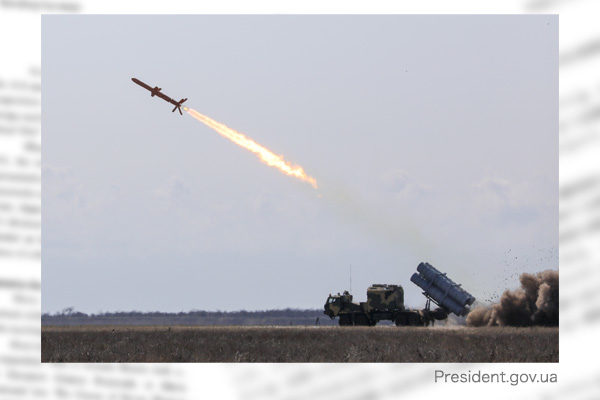Kevin Maher, a former director of the Office of Japanese Affairs at the U.S. Department of State, has proposed Japan to provide the Self-Defense Forces’ Type 12 surface-to-ship missile (SSM) to Ukraine under Russian aggression. I would like to support the proposal from military and international responsibility perspectives.
In mid-June, Ukraine announced that it destroyed a Russian naval tugboat with U.S.-made antiship Harpoon missiles provided by Britain and Denmark. Separately Washington announced a plan to provide two Harpoon launchers to Ukraine as part of its additional military aid to Ukraine. The Maher proposal goes in tandem with the American and European provision of antiship missiles.
Weapons develop through real wars
The Japanese Defense Ministry began to procure the domestically produced Type 12 SSMs since fiscal 2012 and deployed them in Ground Self-Defense Force bases at Amami Island in Kagoshima Prefecture, the Sakishima Islands in Okinawa Prefecture, and other locations. The Type 12 SSM has a range of about 200 kilometers like Harpoon developed by the U.S. military. The Japanese ministry has a plan to extend the range to 900 kilometers in the immediate future and to 1,500 kilometers in the final stage. If launched from Maritime SDF ships and Air SDF aircraft, Type 12 SSMs would become the trump cards to deter China.
U.S. weapons are effective because they have been improved through real wars. Weapons developed in Japan have never been used for real wars but may have to be used without rehearsal. The provision of the Type 12 SSM to Ukraine may serve its improvement.
In 2014, the Japanese government decided on the “three principles on the transfer of defense equipment and technology” that replaced previous three principles which virtually banned arms exports. Japan, in an exceptional move, has provided Ukraine under Russian aggression with bullet proof vests, helmets, protective masks and clothes for chemical warfare, and drones within the range of the new principles.
Ukraine used domestically produced Neptune antiship missiles and sunk the Russian Black Sea fleet’s flagship Moskva in April. The Neptune has a range of 300 kilometers. If Japan provides Ukraine with the longer-range version of the Type 12 SSM, Russian naval ships may have to go far away from the Ukrainian coast. This may work to resume Ukraine’s grain exports, contributing to resolving global food shortages as noted by Maher.
To get European military support in East Asia
Last year, Britain’s Queen Elizabeth carrier strike group as well as French and German naval ships were sent to East Asia, demonstrating their military response to China’s attempt to change the status quo by force. Japan has welcomed such European support. But it may be too egoistic for Japan to expect European military response to China’s attempt in East Asia while ending up supplying only bullet proof vests and the like in response to the Russian attempt in Europe. Such Japanese attitude may be internationally intolerable.
Western countries educate and train Ukrainian troops in third countries when providing weapons to them. Education and training may be required if Japan provides Ukraine with the Type 12 SSM. Given that ASDF aircraft have been used for transporting bullet proof vests and other equipment to Poland neighboring Ukraine, it may be physically feasible to transport SDF personnel for such education and training.
Fumio Ota is a councilor and a Planning Committee member at the Japan Institute for National Fundamentals. He is a retired Vice Admiral of Japan Maritime Self-Defense Force.


